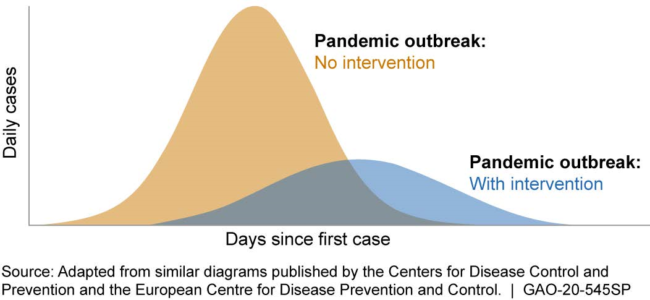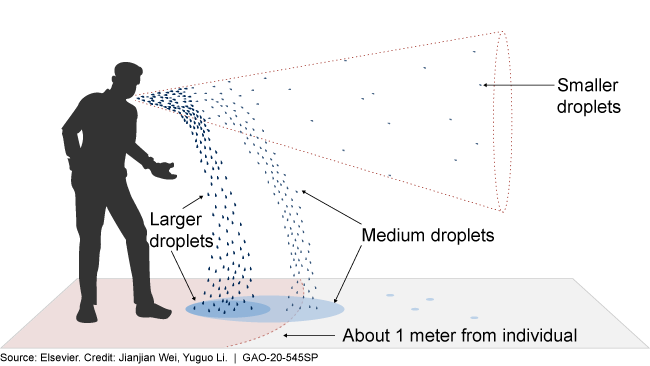This special edition of FYI Roundup highlights research publications on the pandemic and its impact on the workforce and the workplace at large. Selected reports address staying compliant in the wake of the virus, retirement savings challenges, employee wellbeing, healthcare benefits and cost increases, unemployment, employer liability, workplace changes, and the future of work. We also provide information on the role of social distancing in curtailing the spread of COVID-19 in our workplaces and communities.
Download this FYI Roundup as a printable PDF
Employee benefits
Employee Benefits in a Covid-19 World. Provides a snapshot of retirement plans, healthcare benefits, staffing, and professional development concerns to capture the current state of benefit programs during the pandemic. (International Foundation of Employee Benefit Plans, 2020 — Note: gratis to IFEBP members; non-members may purchase report)
Compensation/executive compensation
2020 Executive Compensation Trends and Developments Survey. Presents trends and developments related to say-on-pay, CEO pay rates, clawback/forfeiture policies, and the implications of COVID-19 on short-term incentives and overall financial goals. (Meridian, 2020)
COVID-19 compliance issues
Staying Compliant and Minimizing Impact Amid Coronavirus Concerns. Offers guidance for employers addressing telework, return-to-work during the pandemic, contact tracing, cybersecurity, and building a coronavirus vaccine supply chain. (Bloomberg Law, 2020 — Note: registration required to download report)
Top Five Employment Law Liabilities Facing Employers Post-Pandemic. Alerts employers to potential liabilities related to wage and hour claims, leave complaints, workplace safety, discrimination charges, and WARN Act noncompliance. (Hunton, Andrews Kurth, 2020)
COVID Roundup
See our recent FYI Roundup COVID-19 and the workplace: a six-month recap for more key multidisciplinary HR and benefit developments surrounding the pandemic from Buck’s subject matter compliance experts.
Global benefits
Initial Impacts of Coronavirus on Global Defined Contribution Plans. Addresses the initial policy responses of 188 countries (as of May 15, 2020) regarding participants’ withdrawals of defined contribution (DC) plan savings during the pandemic. (DCIIA, 2020)
The Future of Work and Digital Wellbeing. Offers a glimpse into the workplace of the future and explores how digitalization is changing different industries (marine, manufacturing, finance, oil and gas, and healthcare). Examines the effect on employee wellbeing and suggests steps employers can take to support their workforce in a post-pandemic world. Profiled in the report are Canada, France, Singapore, United Arab Emirates, and the United Kingdom. (The Economist Intelligence Unit and Allianz Partners, 2020)
Protecting health during COVID-19 and beyond: A global examination of paid sick leave design in 193 countries. Analyzes paid sick leave policies in selected UN member countries advocating for comprehensive paid sick leave covering all workers to reduce the spread of COVID-19. (Global Public Health [Journal], 2020)
What 800 executives envision for the postpandemic workforce. Offers a realistic view of the post-COVID-19 workplace and workforce based on interviews with 800 executives from eight countries representing a broad range of industries. Key observations highlighted in the survey are: the accelerated use of digitization and automation during the pandemic (recognizing the widespread adoption of a remote workforce), increase in hiring talent with skills specific to maintaining workplace safety and health, technology related automation, digital learning, and agile ways of working. The leaders also predict increased reliance on contractors and temporary workers. (McKinsey, 2020)
Health & welfare
The Potential Health Care Costs and Resource Use Associated With COVID-19 In the United States. Illustrates the medical costs of the pandemic in the U.S. using simulation modeling. Data is provided for median direct medical cost of a COVID-19 case and use of healthcare resources (outpatient facilities, hospital ICU, ventilators and in-hospital stay) by virus attack rate. (Health Affairs, 2020 — Note: free access to the article is available from the publisher)
U.S. Benefits Trend Report 2020. Provides data, analysis, and insights to help employers develop sound benefit strategies during and after the pandemic. (NFP, 2020)
Almost Half of Adults in Families Losing Work during the Pandemic Avoided Health Care Because of Costs or COVID-19 Concerns. Reports on healthcare challenges families face as a result of the pandemic and the associated economic downturn. The study underscores unmet needs for medical care due to costs and worries about coronavirus exposure and provides data for families with/without jobs. It is also a “call to action” to Congress to ensure families receive needed healthcare during the pandemic and to continue the emergency assistance provided by the Coronavirus Aid, Relief, and Economic Security (CARES) Act. (Urban Institute, 2020)
Paid Family and Medical Leave: Current Policy and Legislative Proposals in the 116th Congress. Provides an overview of current federal family and medical leave policies and temporary eligibility for certain workers under the Families First Coronavirus Response Act (FFCRA), as well as proposals to create a new insurance program designed to promote or provide access to paid family or medical leave. Current tables highlighting benefit eligibility, duration, amounts and other requirements under current and proposed family and medical leave as well as tax policy programs are included. Information covers both private and federal workers. (U.S. Congressional Research Service, 2020)
Wellthy Pandemic Employment Survey. Highlights employee concerns regarding the risks associated with COVID-19 and its impact on caregiving responsibilities. Employer support for caregiving employees, and financial relief to caregivers under the CARES Act are addressed. (Wellthy, 2020 — Note: survey can be downloaded from the website)
Wealth
The State of Savings. Looks at retirement savings behavior since the outbreak of the pandemic from the plan perspective, employer perspective, and saver perspective (including those saving for higher education). Data is provided for employer adoption of coronavirus related loan distributions through the CARES Act. (Ascensus, 2020)
How Widespread Unemployment Might Affect Retirement Security. Investigates how the increase in joblessness caused by COVID-19 has affected retirement savings. The study incorporates recent unemployment data into the National Retirement Risk Index to determine the impact on future earnings, compares the current pandemic crisis with the Great Recession, and concludes that getting unemployed workers back to work as soon as possible will boost workers’ retirement security initiatives. (Center for Retirement Research, 2020)
How the COVID-19 Pandemic Could Impact Retirement Income Adequacy for U.S. Workers. Provides three different market assumption scenarios to forecast retirement savings deficits employees may experience due to the pandemic. (EBRI, 2020)
Defined Contribution Plan Participants’ Activities, First Three Quarters of 2020. Captures the state of DC plan assets from January to September of 2020. Data specific to stock values, participant withdrawal activities, and coronavirus related distributions (CRD) permitted under the CARES Act are presented in the report. (Investment Company Institute, 2020 — Note: report can be downloaded on ICI’s site under Publications & Resources > Research Publications)
(Still) Staying the Course. Investigates plan sponsors’ use of certain provisions of the CARES Act three months after its enactment and provides insights on coronavirus related distributions (CRD), plan loans, employer contributions, and plan terminations. (PSCA, 2020)
Retirement Security Amid COVID-19: The Outlook of Three Generations. Looks at employers’ and workers’ attitudes toward retirement. Examines generational differences in the retirement outlook of millennials (the majority of survey participants), Generation X, and baby boomers to better understand the impact of COVID-19 and the economic recession on their retirement security. Key takeaways: confidence in the ability to retire comfortably is changing; 58% of the respondents were impacted by the pandemic in terms of reduced salary and work hours, furloughs, early retirement, and layoffs; 56% would dip into their savings for additional funds, 29% would use credit cards, and 24% would rely on CARES Act stimulus money to keep them afloat during the pandemic. (Transamerica Center for Retirement Research, 2020)
How America Saves 2020: An Update. Provides information about DC plans, account balances, contributions, allocations, and loan issuances, including hardship withdrawals permitted under the CARES Act. The update discusses the implications of the pandemic on retirement plans, and notes that, despite current economic conditions, participant behaviors toward retirement savings remain unaffected. (Vanguard, 2020 — Note: report can be downloaded from the website)
Workplace/workforce
Gallagher Better WorksSM Insights: Think Differently: Culture, Costs and Community. Explores the impact of COVID-19 on business objectives and priorities. Offers insights for building a sustainable ethical work culture, rethinking healthcare and other benefit costs controls, creating compliant leave programs to enhance employee wellbeing, and providing a comprehensive compensation package for attracting and retaining employees during a crisis. (Gallagher, 2020 — Note: registration is required to download the report)
9 Future of Work Trends Post-COVID-19. Analyzes the workplace implications of COVID-19, highlighting trends forecasted to reshape how organizations will manage their workforce and conduct business. Each trend includes actions for HR to consider, underscoring how companies can stay resilient and competitive in a post-pandemic “new normal.” (Gartner, 2020 — Note: registration is required to download the report)
COVID-19 Flash Survey Report. Identifies operational challenges confronting employers during the pandemic and provides data assessing the level of concern by organizations regarding certain coronavirus related workforce implications and actions in place to protect employees from workplace exposure to the virus. (Littler, 2020)
The Future of Work: How the Pandemic Has Altered Expectations of Remote Work. Examines employee preferences for remote work, perceptions about returning to the office and implications for increased remote work. (Morning Consult, 2020).
The Impact of COVID-19 on the Future of Work. Presents succinct, reliable data based on feedback from 523 participants, representing multiple industries. The data serves as a roadmap for best practices to conduct and sustain business during the pandemic. (WorldatWork, 2020 — Note: report can be downloaded from the association’s COVID-19 resources portal)
Keep your distance
As COVID cases continue to spike during the fourth quarter of 2020, the importance of social distancing takes center stage. Below are charts from a recent U.S. Government Accounting Office document illustrating how critical it is to curtail the spread of the virus by practicing social distancing.


Volume 43 | Issue 76
